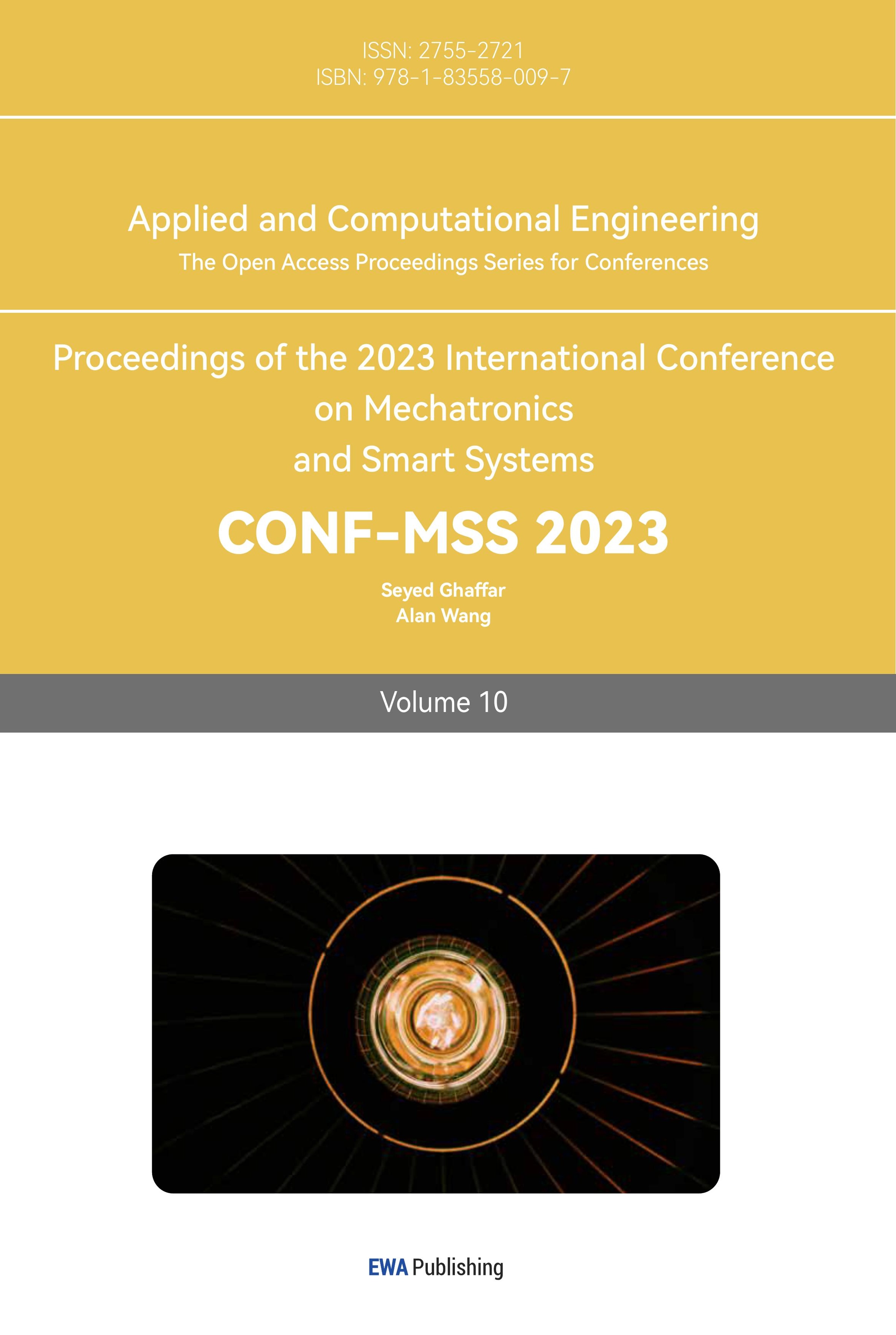References
[1]. Hao L C 2017 Research on Optical Transmission Characteristics of Quantum Dot Fiber Amplifiers. Guizhou University, MA thesis.
[2]. Cheng C and Zhang H 2006 Semiconductor nanocrystal PbSe quantum dot fiber amplifier J. Phys. pp 4139-4144.
[3]. Peng M 2020 Deep learning optimization method and application based on genetic algorithm South China University MA thesis.
[4]. Jiang S R 2021 Research on Grinding Process of Nanocrystalline Cemented Carbide GU092 Fujian University of Engineering MA Thesis.
[5]. Wang Z Y 2022 Research on Material Ordering and Transportation Optimization Problem Based on Multistage Evaluation and Selection Genetic Algorithm. Science and Technology Innovation doi:10.15913/j.cnki.kjycx.2022.22.001.
[6]. Ding K J 2018 Design and Implementation of a Course Scheduling System Based on Chaotic Gray Code Genetic Algorithm Hubei University of Technology MA thesis.
[7]. Jiang C 2009 Ultrabroadband Gain Characteristics of a Quantum-Dot-Doped Fiber Amplifier IEEE J. Sel. Top. Quantum Electron. 15(1) pp 140-144 doi: 10.1109/JSTQE.2008.2010267.
[8]. Hu N S and Cheng C 2016 1250-1370 nm band PbSe quantum dot broadband fiber amplifier. Acta Optica Sinica 36 pp 0406002.
[9]. Cheng C and Zhang H 2007 Characteristics of bandwidth, gain and noise of a PbSe quantum dot-doped fiber amplifier Optics Communications 277 pp 372-378.
[10]. Cheng C and Shao W 2015 Preparation and Spectral Measurement of Solid Core PbSe Quantum Dot Fibers with UV Gel J. Optics 35 (09) pp 74-80.
Cite this article
Fan,L.;Lin,J. (2023). Modelling and numerical simulation optimization of output spectra of PbSe doped quantum dot fiber light source based on genetic algorithm. Applied and Computational Engineering,10,79-85.
Data availability
The datasets used and/or analyzed during the current study will be available from the authors upon reasonable request.
Disclaimer/Publisher's Note
The statements, opinions and data contained in all publications are solely those of the individual author(s) and contributor(s) and not of EWA Publishing and/or the editor(s). EWA Publishing and/or the editor(s) disclaim responsibility for any injury to people or property resulting from any ideas, methods, instructions or products referred to in the content.
About volume
Volume title: Proceedings of the 2023 International Conference on Mechatronics and Smart Systems
© 2024 by the author(s). Licensee EWA Publishing, Oxford, UK. This article is an open access article distributed under the terms and
conditions of the Creative Commons Attribution (CC BY) license. Authors who
publish this series agree to the following terms:
1. Authors retain copyright and grant the series right of first publication with the work simultaneously licensed under a Creative Commons
Attribution License that allows others to share the work with an acknowledgment of the work's authorship and initial publication in this
series.
2. Authors are able to enter into separate, additional contractual arrangements for the non-exclusive distribution of the series's published
version of the work (e.g., post it to an institutional repository or publish it in a book), with an acknowledgment of its initial
publication in this series.
3. Authors are permitted and encouraged to post their work online (e.g., in institutional repositories or on their website) prior to and
during the submission process, as it can lead to productive exchanges, as well as earlier and greater citation of published work (See
Open access policy for details).
References
[1]. Hao L C 2017 Research on Optical Transmission Characteristics of Quantum Dot Fiber Amplifiers. Guizhou University, MA thesis.
[2]. Cheng C and Zhang H 2006 Semiconductor nanocrystal PbSe quantum dot fiber amplifier J. Phys. pp 4139-4144.
[3]. Peng M 2020 Deep learning optimization method and application based on genetic algorithm South China University MA thesis.
[4]. Jiang S R 2021 Research on Grinding Process of Nanocrystalline Cemented Carbide GU092 Fujian University of Engineering MA Thesis.
[5]. Wang Z Y 2022 Research on Material Ordering and Transportation Optimization Problem Based on Multistage Evaluation and Selection Genetic Algorithm. Science and Technology Innovation doi:10.15913/j.cnki.kjycx.2022.22.001.
[6]. Ding K J 2018 Design and Implementation of a Course Scheduling System Based on Chaotic Gray Code Genetic Algorithm Hubei University of Technology MA thesis.
[7]. Jiang C 2009 Ultrabroadband Gain Characteristics of a Quantum-Dot-Doped Fiber Amplifier IEEE J. Sel. Top. Quantum Electron. 15(1) pp 140-144 doi: 10.1109/JSTQE.2008.2010267.
[8]. Hu N S and Cheng C 2016 1250-1370 nm band PbSe quantum dot broadband fiber amplifier. Acta Optica Sinica 36 pp 0406002.
[9]. Cheng C and Zhang H 2007 Characteristics of bandwidth, gain and noise of a PbSe quantum dot-doped fiber amplifier Optics Communications 277 pp 372-378.
[10]. Cheng C and Shao W 2015 Preparation and Spectral Measurement of Solid Core PbSe Quantum Dot Fibers with UV Gel J. Optics 35 (09) pp 74-80.









